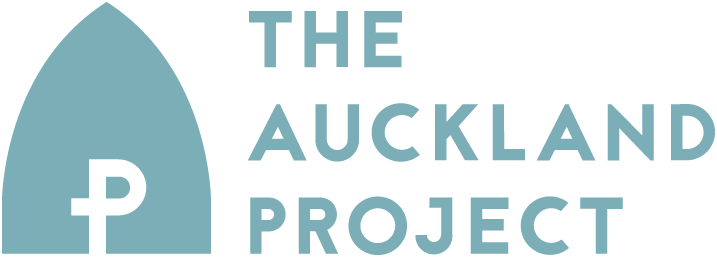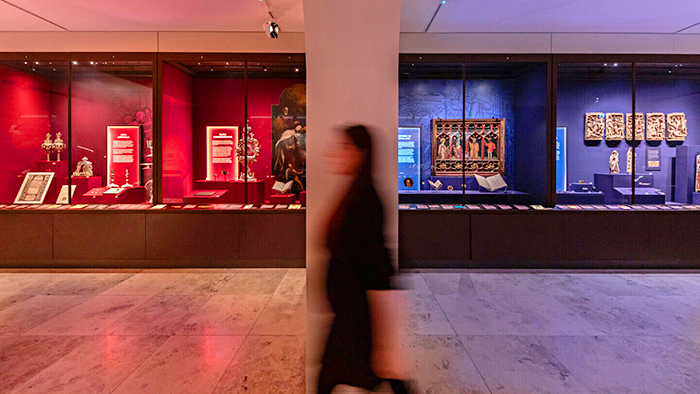Museum exploring 6,000 years of belief across Britain opens in Bishop Auckland
A new museum dedicated to telling the history of faith in the UK has opened in Bishop Auckland, County Durham.
Part of the Auckland Project cultural destination, the Faith Museum is housed in a 14th-century wing of Auckland Castle and a newly built extension by Níall McLaughlin Architects. The castle was the historic home of the prince bishops of Durham.
The museum covers encounters, experiences and expressions of faith in Britain, featuring more than 250 objects from public and private collections across England, Scotland and Wales.
It invites visitors to consider the ways faith has shaped lives, and continues to do so, with half of the gallery space dedicated to the work of contemporary British artists and their personal responses to faith.
Among those featured are Newcastle-based artist Mani Kambo, Mat Collishaw, Nicola Green, the Singh Twins, and the late Khadija Saye, who died in the Grenfell Tower fire of 2017.
Part of the wider restoration and redevelopment of the Auckland Project, the museum was supported with a £12.4m grant from the National Lottery Heritage Fund and other funders including the Jerusalem Trust. It aims to welcome visitors from all walks of life, whether they identify as religious, spiritual, or neither.
Collection highlights
- The Binchester Ring: excavated in 2014 at Binchester Roman Fort, this silver ring with carved carnelian stone inscribed with an anchor and fish is rare early evidence of Christianity in Britain.
- The 13th-century Bodleian Bowl, an early example of evidence of Jewish communities in Britain. This decorated bronze vessel is inscribed with the name of Joseph, son of Rabbi Yechiel, a famous scripture scholar of Paris.
- An altar hanging made from fragments of embroidered blue velvet, probably assembled after 1600 from garments worn by pre-Reformation priests, to preserve remnants of the Catholic faith.
- A wooden pulpit made around 1760 for a chapel in Teesdale built by its congregation of miners, who also donated money to buy the land and stone. John Wesley visited the chapel and preached from the pulpit.
- A rare surviving Tyndale Bible. This English New Testament was printed in 1536, the year William Tyndale was hunted down in exile in Antwerp and executed for heresy.
The upper floor of the museum houses a programme of temporary exhibitions and installations. The final gallery space invites visitors to reflect on three central questions present throughout the museum: “Where do I belong?”; “How do I live?”; and “Am I alone?”
According to the museum: “The challenge of defining the nature and impact of something seemingly intangible is a foundation of the museum, which does not seek to force a definition of faith but rather invites visitors to consider how people across history have described and demonstrated it.
“This style of presenting objects is suggestive – often powerfully so – but the power of suggestion is located within the viewer, who is not directed towards any particular interpretation or conclusion.”
Local faith leaders, academic specialists and community groups provided perspectives throughout the development process.
“The Faith Museum turned out to be the hardest piece of our jigsaw,” said Jonathan Ruffer, founder of The Auckland Project. “We have tried to tell stories which put into context 6,000 years of human endeavour and the restlessness of the human spirit.”
Clare Baron, head of exhibitions at the Auckland Project, said: “The objects and contemporary artworks on display tell the story of how people in Britain have expressed their faith throughout history, often in a very personal way. I’d like to thank all the lenders, artists, advisors and funders who have helped to create a space for us all to reflect on and discuss what faith means to us.”


